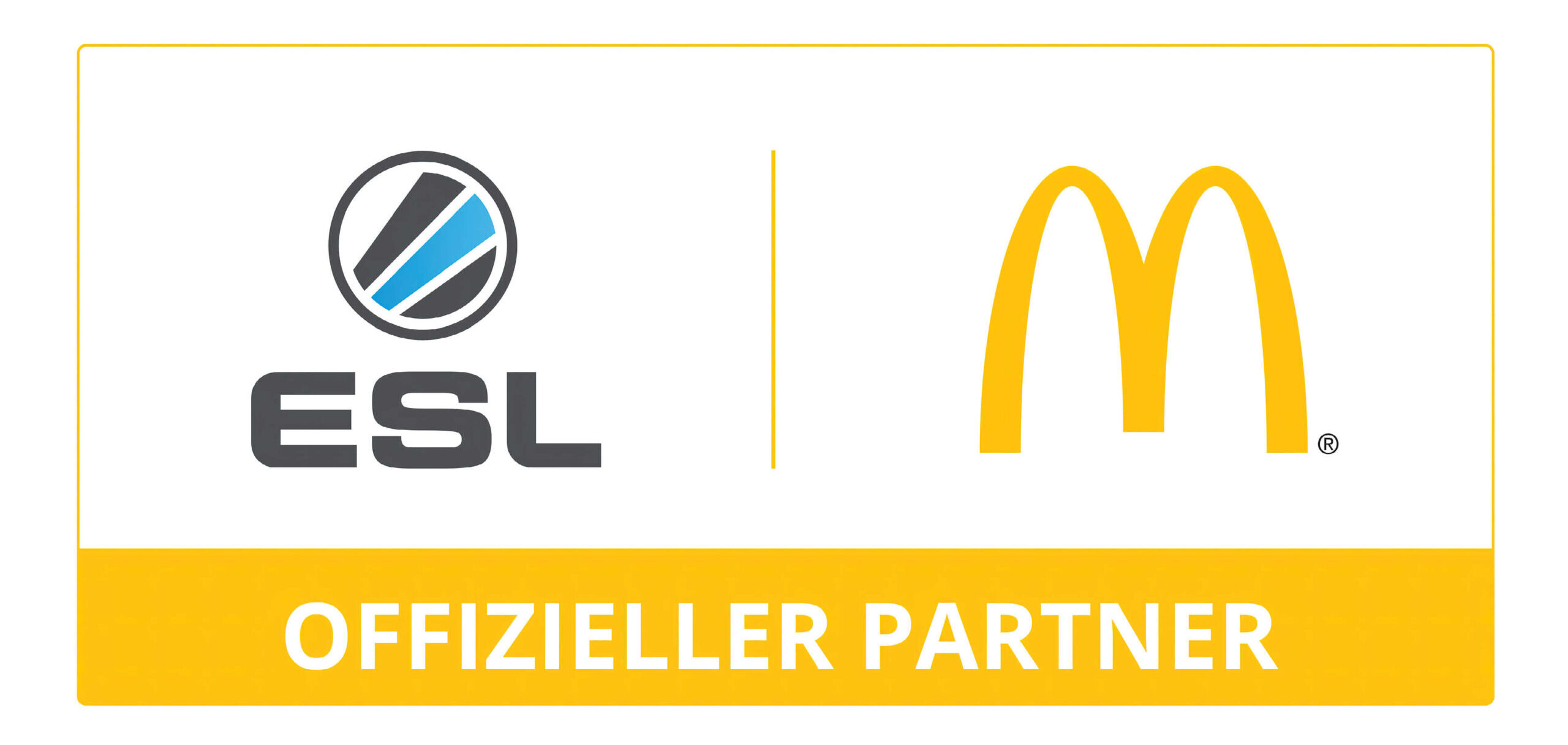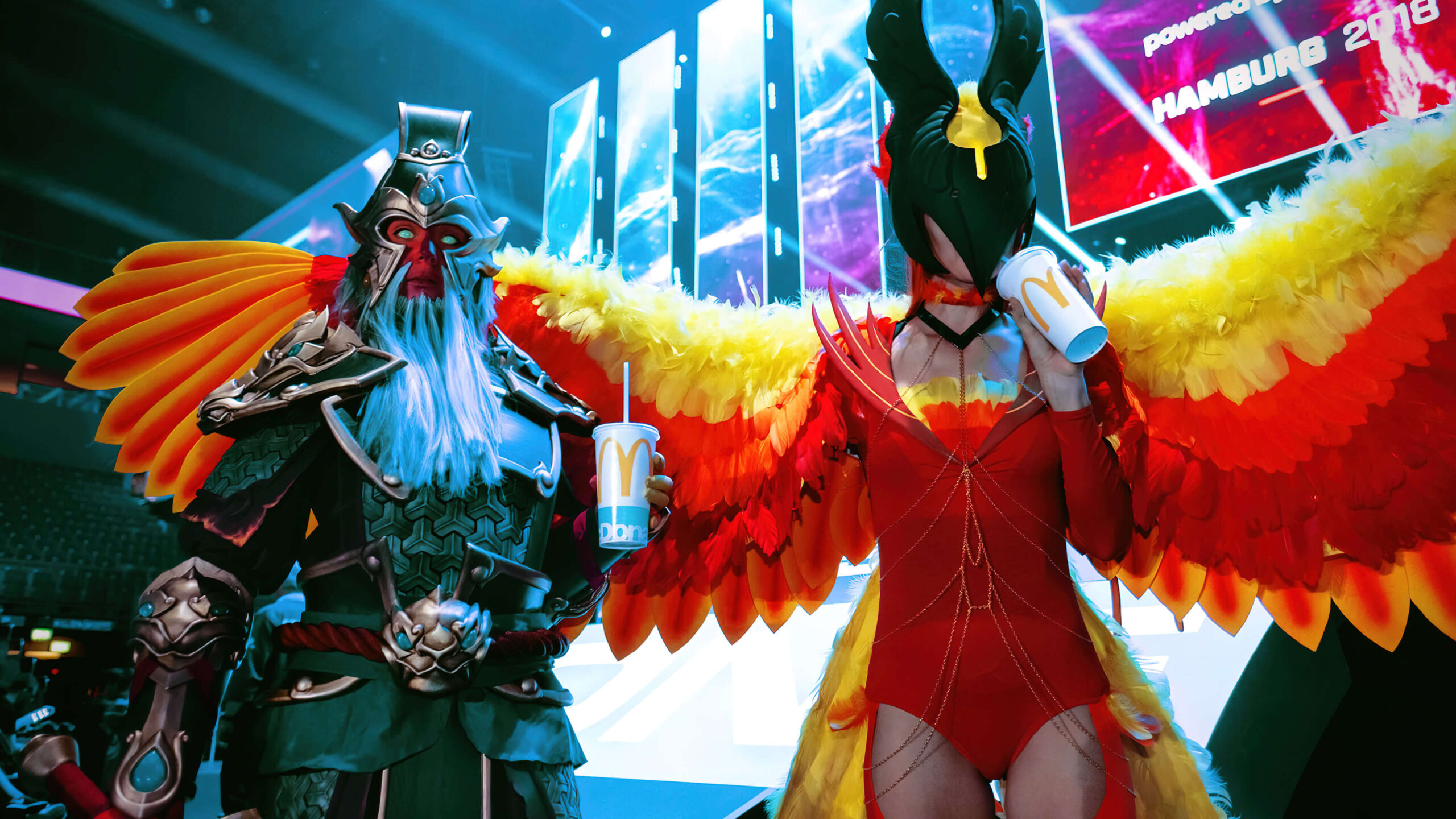Title: E-Sports Sponsorship – Because they want the Millennials!
They are doing it! Major brands such as McDonald’s, Mercedes, DHL and Nike are sponsoring e-sports. Proof that the development of e-sports is no longer just a passing trend but has a place in a serious marketing strategy. E-sports not only makes it possible to target the millennials, who are difficult for brands to reach. There are other reasons to sponsor e-sports.

Source: obs/McDonald’s Deutschland/McDonald’s Deutschland, ESL
For those who still don’t think this is a development to be taken seriously, here are a few facts about the fledgling discipline: The Dota 2 tournament “The International 2017” distributed almost 22 million euros in prize money to the participating teams. This is more than any other sport, including cycling (Tour de France 2017: €2.3 million) and golf (The Open 2017: €9.2 million). Contrary to the industry’s critics, those interested in e-sports are not just teenagers without purchasing power. This is confirmed by the recent PWC study “The burgeoning evolution of eSports”. The typical e-sports consumer is 28 years old on average, and is mainly found between the ages of 18 and 34.1
The world of sports sponsorship is definitely changing. The deal between McDonald’s and the Electronic Sports League (ESL) coincided with the burger chain’s withdrawal as a partner of the German Football Association (DFB). In doing so, a company that is not entirely comfortable with digital transformation and rejuvenation is abandoning an extremely far-reaching but somewhat well-worn commitment to investing in this trend sport. The appeal of e-sports sponsorship lies not only in the attractive target group, but also in the new dimension of dialogue, relevance and brand experience. A brand can interact much more directly with its target audience in e-sports than has ever been possible in traditional sports. Of course, this has to be done in a playful way, because in this environment, too, the “how” decides whether the community engages with the brand or not.

Source: McDonald’s
The formula: Dialogue, Relevance and Brand Experience
This is the biggest challenge for brands such as Mercedes, DHL or McDonald’s. Can they create a relevant need and/or tell a good story? While in traditional sponsorship of major events, brands marginalise each other in a “logo graveyard”, e-sports sponsorship is fundamentally different. For example, the well-known McDonald’s escort before the national football team’s games may appeal to children and their parents, but certainly not to McDonald’s key Gen Y and Gen Z audiences. They are bored with the same old stuff. They are bored with the same channels, the same messages, the same frontal sound and they want to experience brands as meaningful experiences.
In e-sports, a good story can be supported by an activation concept. This requires the full repertoire of digital channels to be used: brand-owned social media, media placement in relevant media and dialogue tools in harmony. Those who master the art of digital campaigning have the chance to stay relevant – even as a traditional brand like McDonald’s. But to win over Gen Y and Gen Z, new and unfamiliar presentations are needed. McDonald’s has taken the first step by getting involved in e-sports; the fast food chain is getting closer to the underdogs, the long ridiculed e-sports players, and can communicate with viewers on an equal footing. This signals respect for otherness, an attitude that is highly valued in target groups that do not see themselves as mainstream. Other brands have taken this step with self-deprecation, self-criticism or perfect integration and adaptation of all the conventions of the scene. This is also a sign of self-reflection and honesty. It gives a rougher and more interesting surface to brands that are too smooth for Generation Y and Z.
So we look forward to creative solutions in the field of e-sports sponsorship. Whether it is delivering McDonald’s directly to the tournament tables or using olfactory elements, there are far fewer limits to creativity in e-sports. We look forward to more imaginative sponsorship than “… is presented to you by XY”. It’s about time!2


Source: ESL
How does e-sport work?
As the name suggests, players compete against each other online, even in traditional sports such as football or basketball. The player does not necessarily have to be physically fit but must be able to perform at a high level of motor and cognitive performance. Above all, stamina and concentration are required. Once a team is formed, it is called a “clan”. Today, e-sports is organised in exactly the same way as the offline world: with clubs, including the big ones, with tournaments like the Olympics, and with federations or even anti-doping agencies.

Source: ESL
How do you make 700 million in e-sports revenue?
Wherever a new audience is created and a young target group can be reached, money flows. Teams win prize money and have sponsors – the sums are considerable. Teams livestream their training sessions, reaching their own audience outside of tournaments. That’s why, in addition to the obvious gaming hardware brands, companies from outside the industry, such as banks or insurance companies, are getting in on the act. There are also streaming platforms such as Twitch, which pay for broadcasting rights, and tournament and league organisers, who pay royalties to game manufacturers (if they don’t run a tournament or league themselves). In addition to physical ticket sales by teams, tournaments and leagues, they also engage in merchandising. Game publishers also sell virtual items or in-game costumes to fans.3
How do you follow e-sports?
Matches are not only shown or broadcast on the Internet, they are also watched offline at public viewings. In tournaments, even the players are in the room or stadium and the broadcast takes place on screens. In November 2018, ProSieben became the first TV station with a wide reach to broadcast an e-sports tournament live. Otherwise, the topic is more at home on special interest channels such as Sport 1 and ProSiebenMAXX. More interesting for the scene are internet platforms such as Twitch, where so-called streamers broadcast their skills to interested parties. The main users of such platforms are by no means only young people. People in their mid-thirties are also regular viewers. By the way: According to media reports, a total of 60 million people around the world tuned in to watch this year’s League of Legends World Cup final at the Beijing Olympic Stadium. By comparison, the Champions League football final was watched by around 300 million people.4

